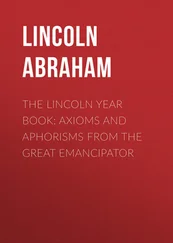Reconstruction of this proof was briefly published as early as 2008 [30], but the unholy was on the alert and presented this event so, that modern science disoriented by the false notion that the problem was solved long ago, has not paid on this any attention. However, all secret sooner or later becomes clear and the decisive word in spite of everything, still remains for science. The question now is only when this science will finally awaken and comes to his senses. The longer it will be in a blissful state of oblivion, the sooner the terrible events will come that already now beginning to shake our world like never before.
In order for science to win a well-deserved victory over the gloom of ignorance and mass disinformation, which are triumphant today, it needs very little. For the beginning it is necessary simply to search for the very cache, in which such secrets of science are hidden, that have not lost their relevance for three and a half centuries. 31Even if the papers found in the cache will be unreadable, the very fact of the existence of the cache will be evidence that science is moving in the right direction and the results will not be long in coming.
We already did something in this direction when we restored the FLT recording in the margins of Diophantus 'Arithmetic' (see pic. 5 and the translation in the end of Pt. 1). Now, by all means, we need to get a complete picture of the whole sequence of events that led to the discovery of the FLT in its final wording published in 1670. It will not be easily at all, but since we got involved in this story, now we have nowhere to retreat and we will strain all our forces to achieve the aim. Fortunately, for this we have all the opportunities granted to us from above to get the coveted access to the cache of the Toulousean senator.
3.1. Definition the Notion of Number
The question about the essence the notion of number at all times was for scientists the thing-in-itself. They of course, understood that they could not distinctly answer this question as well as they could not admit in this since this would have a bad effect on maintaining the prestige of science. What is the problem here? The fact is that in all cases a number must be obtained from other numbers, otherwise it cannot be perceived as a number. To understand for example, the number 365, you need to add three hundred with six tens and five units. It follows that the notion of a number does not decompose into components that are qualitatively different from it and in such a way as usual for science i.e. through analysis, it is not possible to penetrate the secret of its essence.
Scientists having a question about the nature of numbers immediately ran into this problem and came to the conclusion that a general definition the notion of number simply does not exist. But not a such was Pierre Fermat who approached this problem from other side. He asked: “Where does the notion of number come from?” And came to the conclusion that his predecessors were the notions “more”, “less” and “equal” as the comparisons’ results of some properties inherent to different objects [30].
If different objects are compared in some property with the same object then such a notion as a measurement appears, so perhaps is the essence of a number possible revealed through a measurement? However, it is not so. In relation to the measurement, the number is primary i.e. if there are no numbers, there can be no also measurements. Understanding the essence of the number becomes possible only after establishing the number is inextricably connect with the notion of “function”.
But this notion is not difficult to determine:
A function is a given sequence of actions with its arguments.
In turn, actions cannot exist on their own i.e. in the composition of the function in addition to them must include the components, with which these actions are performed. These components are called function arguments . From here follows a general definition the notion of number:
Number is an objective reality existing as a countable quantity, which consists of function arguments and actions between them .
For example, a+b+c=d where a, b, c are arguments, d is a countable quantity or the number value . 32
To understand what a gap separates Pierre Fermat from the rest of the science’s world, it is enough to compare this simple definition with the understanding existing in today's science [13, 29]. But understanding clearly presenting in the scientific works of Fermat, allowed him still in those distant times to achieve results that for other scientists were either fraught with extreme difficulties or even unattainable. It may be given also the broader definition the notion of number, namely:
A number is a kind of data represented as a function.
This extended definition the notion of number goes beyond frameworks mathematics; therefore, it can be called as general one and the previous definition as mathematical. In this second definition, it is necessary to clarify the essence the notion of “data”, however, for modern science this question is no less difficult than the question about the essence of the notion a number. 33
From the general definition the notion of number follows the truth of the famous Pythagoras' statement that everything existing can be reflected as a number. Indeed, if a number is a special kind of information, this statement very bold at that time, was not only justified, but also confirmed by the modern practice of its use on computers where three well-known methods of representing data are implemented: numerical (or digitized), symbolic (or textual) and analog (images, sound, and video). All three methods exist simultaneously.
Pic. 30. Pythagoras
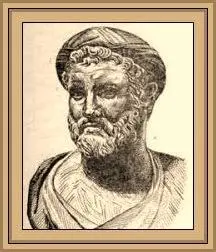
A strikingly bold statement even for our time that thinking is an unconscious process of computations, have been expressed in the 17th century by Gottfried Leibniz. Here, thinking is obviously understood as the process of data processing, which in all cases can be represented as numbers. Then it is clear how computations appear, but understanding of the essence of this process in modern science is so far lacking. 34
Pic. 31. Gottfried Leibniz
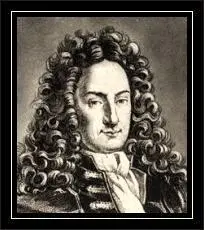
All definitions of a number have one common basis:
Numbers exist objectively in the sense that they are present in the laws of the world around us, which can be known only through numbers .
From the school bench everyone will learn about numbers from the childish counting: one, two, three, four, five etc. Only the Lord knows where did this counting come from. However, there were attempts to explain its origin using axioms, but the origin of them is as incomprehensible as the counting. Rather, it looks like a certain imitation of the Euclid's "Elements" to add to knowledge the image of science and the appearance of solidity and fundamentality.
The situation is completely different when there is a mathematical definition the essence of a number. Then for a more complete understanding of it, both axioms and a countable quantity become a necessity. Indeed, this definition to the essence of a number includes arguments, actions and a countable quantity. But arguments are also numbers and they should be presented not specifically each of them, but by default i.e. in the form of a generally accepted and unchanged function, which is called the number system, however it no way could to appear without such a notion as a count. Now, axioms turn out to be very appositely and without them a count may be got only from aliens. In reality it was namely so happened since such sources of knowledge as the Euclid's “Elements” or the Diophantus' “Arithmetic” were clearly created not by our, but by a completely different civilization. 35
Читать дальше
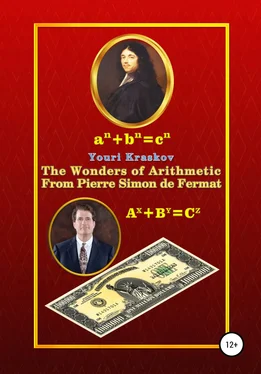





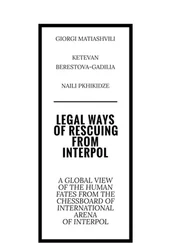
![Theresa Cheung - The Dream Dictionary from A to Z [Revised edition] - The Ultimate A–Z to Interpret the Secrets of Your Dreams](/books/692092/theresa-cheung-the-dream-dictionary-from-a-to-z-r-thumb.webp)






